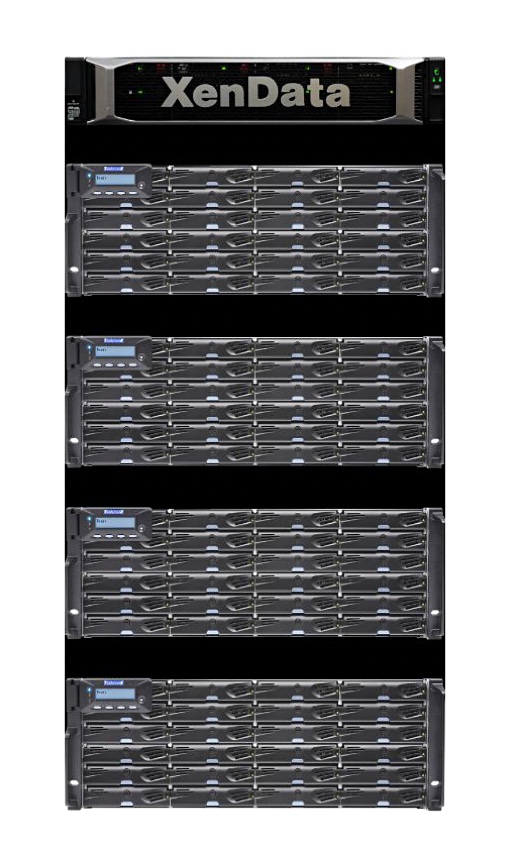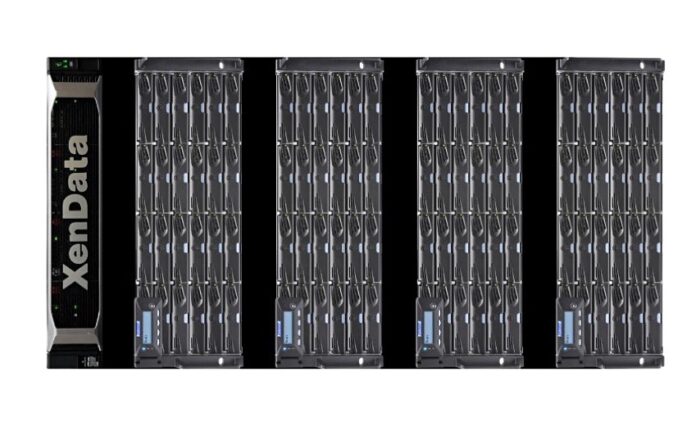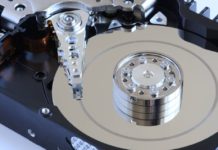XenData is developing a media browser for faster location of video file segments to be integrated into its networked disk-based archive for media and entertainment (M&E) customers.
B&F learned about this at an IT Press Tour briefing. The company, known for its X series of tape archives front-ended with a RAID disk cache, also has an E-Series, which is fully disk-based and scales out from one to four nodes, each storing 280 TB in its usable capacity.

E-Series content can be accessed using the S3 object protocol from anywhere using HTTPS, or via the Windows File System locally, with Active Directory security, and NFS, CIFS/SMB protocol support. The system is compatible with many media asset management (MAM) applications so supports collaboration between media teams.
The system has various options to support mirroring files to a second E-Series appliance, to a connected LTO tape library or to public cloud object storage. The archiving to tape or the public cloud moves files there and leaves stubs behind so no changes in access are needed. Logically, the files are still in the E-Series system.
Being disk based, it is very much an active archive system and provides faster access to any file than XenData’s disk+tape X series products. If a file is in the RAID cache, access is as fast as with the E-Series. If it’s on tape, access will be slower, and if on external tape, much slower.
The spun-down disk-based Disk Archive system, with its ALTO product’s one-minute idle disk spin up time, will be faster than a tape library but not as fast as the E-Series. So in an access speed hierarchy, it sits between XenData’s X series products and the E-Series.
CEO Dr Philip Storey said: “Disk Archive has features we don’t have and we have features they don’t. We’re open to working with them.”
Asked about E-Series cost, he said: “Over five years, disk is 2.5x more expensive than tape.”
What about storing archived video data in the cloud rather than on the E-Series? He said that, in general, “at the petabyte level the cloud costs $1.2-1.5 million over five years, and the E-Series is much cheaper.”
There is a break point. “Below 100 TB of capacity use in the cloud, if you have more than 100 to 400 TB then choose on-premises tape or the E-Series. It costs less.”
Media Browser
CTO and co-founder Dr Mark Broadbent told briefing attendees that XenData was developing a media browser in response to customer wishes to find a desired segment in a large video faster than by playing the video and waiting until it appears.

In theory, you could do this with time-stamped metadata tags, with, for example, a tag timed at 10.5 seconds in a football video labelled “Penalty taken.” But it will take a massive effort to manually add such tags to archived videos and AI can’t do it yet. It is simpler to take advantage of the human eye’s scanning ability and display a set of low resolution images, or previews, showing different parts of the video.
The human eye can check these quickly, zoom in on the right one, click it, and then XenData’s system will locate and display the corresponding high-resolution video segment. A 4K video could have proxies displayed with 2 percent resolution.
Broadbent said: “We write a video file twice – once at high depth and once again in at low depth (resolution). You navigate by sight looking at low-density images (previews), which can also play at low depth. Then you can go right to the high-res image.”
He said these low-res previews “are not proxies which are frame-accurate. Our previews are not frame-accurate and quick to write. Proxies can take a long time to produce.”
This Media Browser will be an add-on to the E-Series in 2024. The company will also introduce a XenData Media Cloud in 2024.
Bootnote

XenData was founded in September 2001 by two ex-Plasmon people, Dr Philip Storey and Dr Mark Broadbent. They were involved with UK-based Plasmon’s UDO, Ultra Density Optical disk storage, which failed to become a viable product.
They self-funded XenData, using money they made in the dot-com era, not wanting to become slaves to investing VCs and product direction demands. Storey and Broadbent did not believe in optical data technology and started XenData to combine disk and tape in an archive.
XenData produced its first product in 2003 and has grown organically since then. It won a TV station installation customer in 2005 which persuaded Storey and Broadbent that their technology had a great fit with entertainment industry needs.
Storey said: “We’re in oil and gas and other markets but M&E is our main market.”
It has more than 1,500 installations in 97 countries with 90 percent being in the media and entertainment category. Customers include broadcasters, TV and film studios, video production companies, post-production, corporate marketing departments, pro sports teams, and churches. Competitors include Quantum and SpectraLogic.








